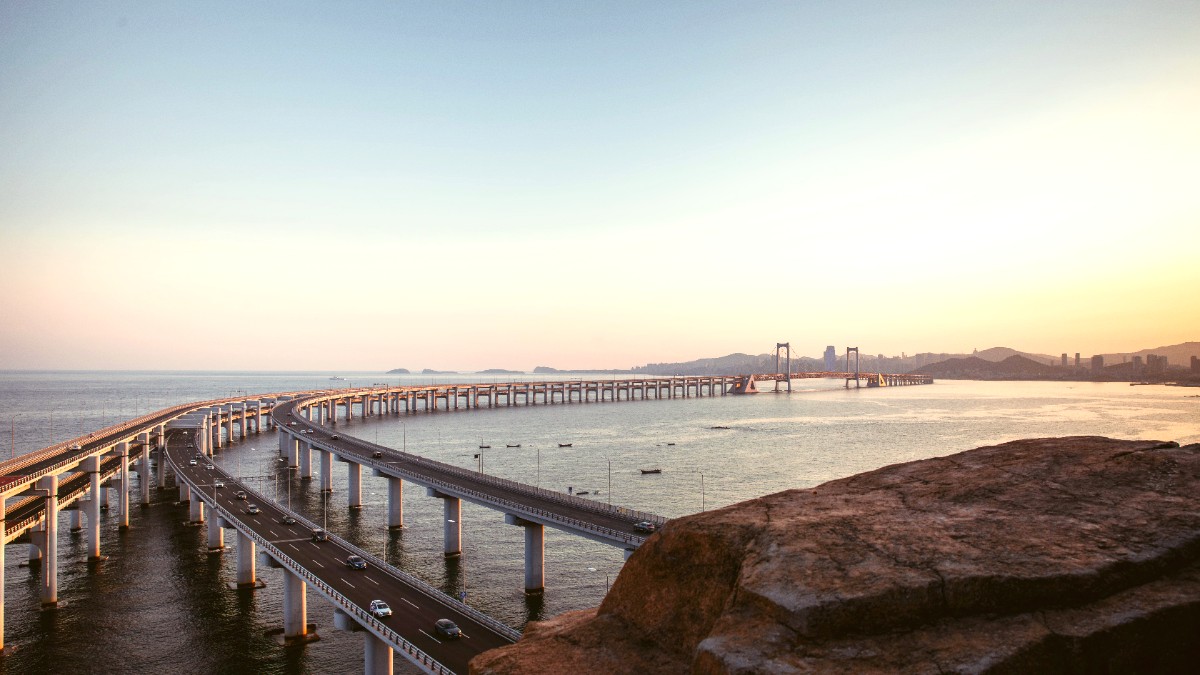
Liaoning, China
Here, visitors discover a relaxed pace, cleaner air, and abundant green spaces, a welcome contrast for those seeking a tranquil yet dynamic urban journey. Dalian’s charm lies in its ability to surprise and delight, uncovering layers of history and culture around every corner, from its distinct architectural styles to its lively local markets. This guide guides you toward a rewarding trip to a destination that holds both serene coastal views and the energetic pulse of a growing Chinese city. Plan a visit to Dalian and uncover a memorable blend of old-world elegance and forward-looking vibrancy.
Dalian sits on the southern tip of the Liaodong Peninsula in Liaoning Province, Northeast China. Its unique geographical position means it is almost entirely surrounded by water, with the Yellow Sea to the east and the Bohai Sea to the west. This peninsular location marks Dalian with its distinct maritime climate and its identity as a port city. The coastline stretches for hundreds of kilometers, forming numerous natural harbors, bays, and beaches that shape the city’s character and economy.
The terrain around Dalian includes rolling hills and low mountains, which give a scenic backdrop to the urban sprawl and display many elevated viewpoints overlooking the sea. These geographical features help Dalian earn its reputation as a "garden city," where urban development integrates with natural landscapes. The city's northern boundaries connect it to the rest of Liaoning Province, aiding land-based transportation and trade. At the tip of the peninsula, Dalian is a natural gateway for maritime routes to Korea, Japan, and other international destinations, a role that historically shaped its development and cultural makeup. This strategic position as a natural deep-water port has been a force behind its economic growth and its past as a sought-after territory by various powers. The city's geography guides not only its climate and industries but also the outdoor activities present, from coastal walks to exploring the natural formations of its beaches and hills.
Dalian's past is rich with international influence, a story that formed its architecture, urban planning, and character. Originally a small fishing village, its strategic deep-water port drew imperial powers in the late 19th and early 20th centuries. Russia first developed the city, then Dalny, after acquiring a leasehold from China in 1898. Russian planners laid out the city's wide, radial streets and many of the European-style buildings that stand around Zhongshan Square. This period bequeathed a lasting architectural legacy, apparent specifically in areas like Russian Street.
Following the Russo-Japanese War (1904-1905), Japan gained control of Dalian, renaming it Dairen. Japanese administration further developed the city’s infrastructure, industry, and urban fabric. They expanded the port, established factories, and built additional districts, including what is now known as Japanese Street, with its distinct architectural style. This era brought significant economic growth and the city’s change into a major industrial and commercial hub for Japan in Northeast Asia. Dalian also functioned as an important military base, especially the nearby Lushun (Port Arthur) area, which stayed pivotal for battles. After World War II, Soviet forces occupied Dalian, and it remained under Soviet influence for several years before being fully returned to China in 1955.
Small fishing village, regional significance.
Established as Dalny, initial urban planning, European architecture.
Renamed Dairen, industrial expansion, port growth, distinct architecture.
Post-WWII control and transition.
Economic powerhouse, "garden city" focus, technology and tourism hub.
In recent decades, Dalian welcomed its role as a modern economic powerhouse, a hub for finance, technology, and tourism. It has changed into a model "green city" while continuing to honor its complex historical layers.
The city's buildings and urban design showcase Russian and Japanese styles, specifically around Zhongshan Square and on Russian and Japanese Streets.
Dalian continues to be a economic center in Northeast Asia, with a growing focus on high-tech industries and finance.
This blend of colonial heritage and modern ambition builds a compelling narrative for visitors.
On the Liaodong Peninsula, Dalian holds extensive coastline along both the Yellow and Bohai Seas. The city's history is layered with Russian and Japanese colonial influences, apparent in its European-style architecture around Zhongshan Square and the distinct charm of Russian and Japanese Streets. This rich past contrasts with its modern identity as a dynamic economic center and a beautiful, livable "garden city."
Visitors discover a destination recognized for its pleasant climate, especially in autumn, and its abundance of fresh seafood. Iconic landmarks comprise the vast Xinghai Square, the historic Zhongshan Square, and the scenic Binhai Road, which hugs the coastline. Major attractions like Laohutan Ocean Park and Golden Pebble Beach hold engaging experiences for all ages, from marine life encounters to unique geological formations. Dalian’s local transportation, covering a modern Metro system and historic trams, simplifies exploration. The city’s culinary scene marks its maritime bounty, with countless seafood restaurants adding to hearty Northeastern Chinese dishes. Dalian displays a welcoming atmosphere, combining cultural intrigue with natural beauty and urban convenience. It is an excellent choice for travelers seeking a different perspective on China, blending relaxation with exploration.
Dalian functions as a "garden city" recognized for its green spaces, clean environment, and a more relaxed pace than larger Chinese megacities. It mixes historical charm with modern amenities.
On the southern tip of Liaodong Peninsula, Liaoning Province, Northeast China; border Yellow and Bohai Seas.
A rich colonial past with significant Russian and Japanese influence, shaping its architecture and urban layout.
Dalian's culinary scene centers on its fresh seafood bounty and the hearty, comforting dishes typical of Northeast China.